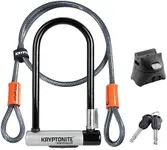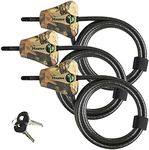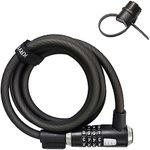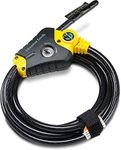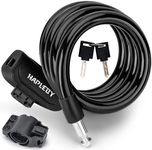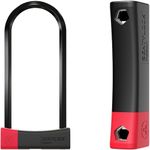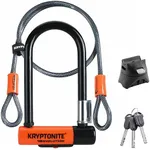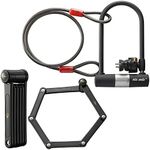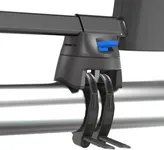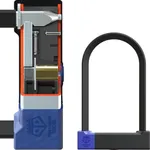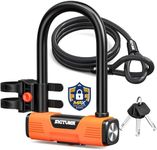Buying Guide for the Best Cable Locks
When it comes to securing your belongings, choosing the right cable lock is crucial. Cable locks are versatile and can be used to secure bikes, gates, luggage, and more. The key to selecting the best cable lock for your needs is understanding the various specifications and how they impact the lock's performance and suitability for your specific use case. Here are the key specs to consider when choosing a cable lock and how to navigate them to find the best fit for you.Cable ThicknessCable thickness is a measure of the diameter of the cable. This spec is important because thicker cables are generally more resistant to cutting and provide better security. Cable thickness can range from a few millimeters to over 10 millimeters. For high-security needs, such as locking up a bike in a high-theft area, opt for a thicker cable (8-10mm or more). For lower-risk situations, like securing luggage or a gate in a low-crime area, a thinner cable (4-7mm) may suffice. Consider the level of security you need based on where and how you will use the lock.
Cable LengthCable length refers to how long the cable is when fully extended. This is important because it determines how much you can secure with the lock. Cable lengths can vary from short (around 2 feet) to long (over 6 feet). If you need to secure multiple items or wrap the cable around larger objects, a longer cable is necessary. For securing a single item or smaller objects, a shorter cable will be more manageable and less cumbersome. Think about what you will be locking up and choose a length that provides enough flexibility for your needs.
Locking MechanismThe locking mechanism is how the cable lock secures and unlocks. Common types include key locks and combination locks. This spec is important because it affects convenience and security. Key locks require a physical key to open, which can be more secure but also means you need to keep track of the key. Combination locks use a code, which can be more convenient as you don't need a key, but you must remember the code. Choose a locking mechanism based on your preference for convenience versus security. If you tend to lose keys, a combination lock might be better. If you prefer the added security of a key, go with a key lock.
MaterialThe material of the cable lock affects its durability and resistance to cutting. Most cable locks are made from steel, but the quality and type of steel can vary. Higher-quality steel cables are more resistant to cutting and provide better security. Some cables are also coated with materials like vinyl to prevent scratching and add weather resistance. When choosing a cable lock, consider the environment in which it will be used. If it will be exposed to the elements, look for a lock with a weather-resistant coating. For maximum security, opt for a lock made from high-quality, hardened steel.
FlexibilityFlexibility refers to how easily the cable can be bent and maneuvered. This is important because a more flexible cable is easier to use and can be wrapped around objects more easily. However, very flexible cables may be less secure as they can be easier to cut. Cables with moderate flexibility offer a good balance between ease of use and security. If you need to secure items in tight or awkward spaces, a more flexible cable will be beneficial. For general use, a cable with moderate flexibility should suffice.
